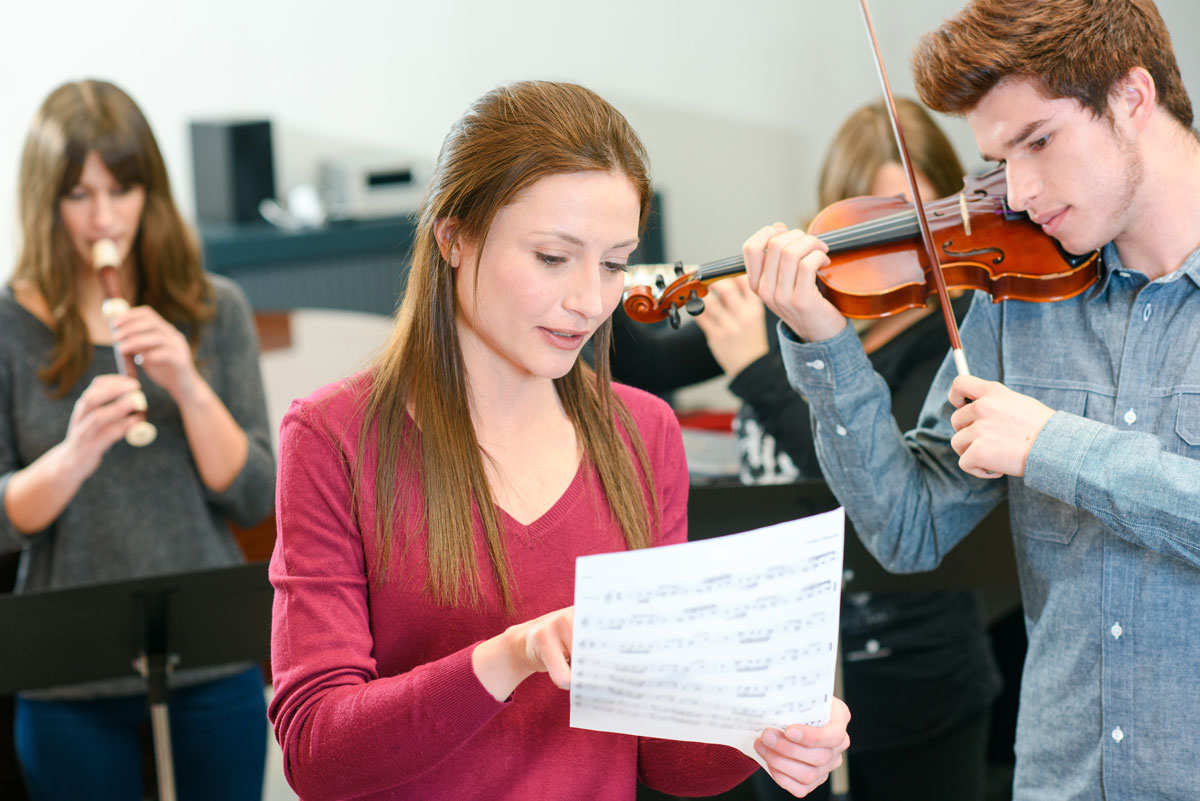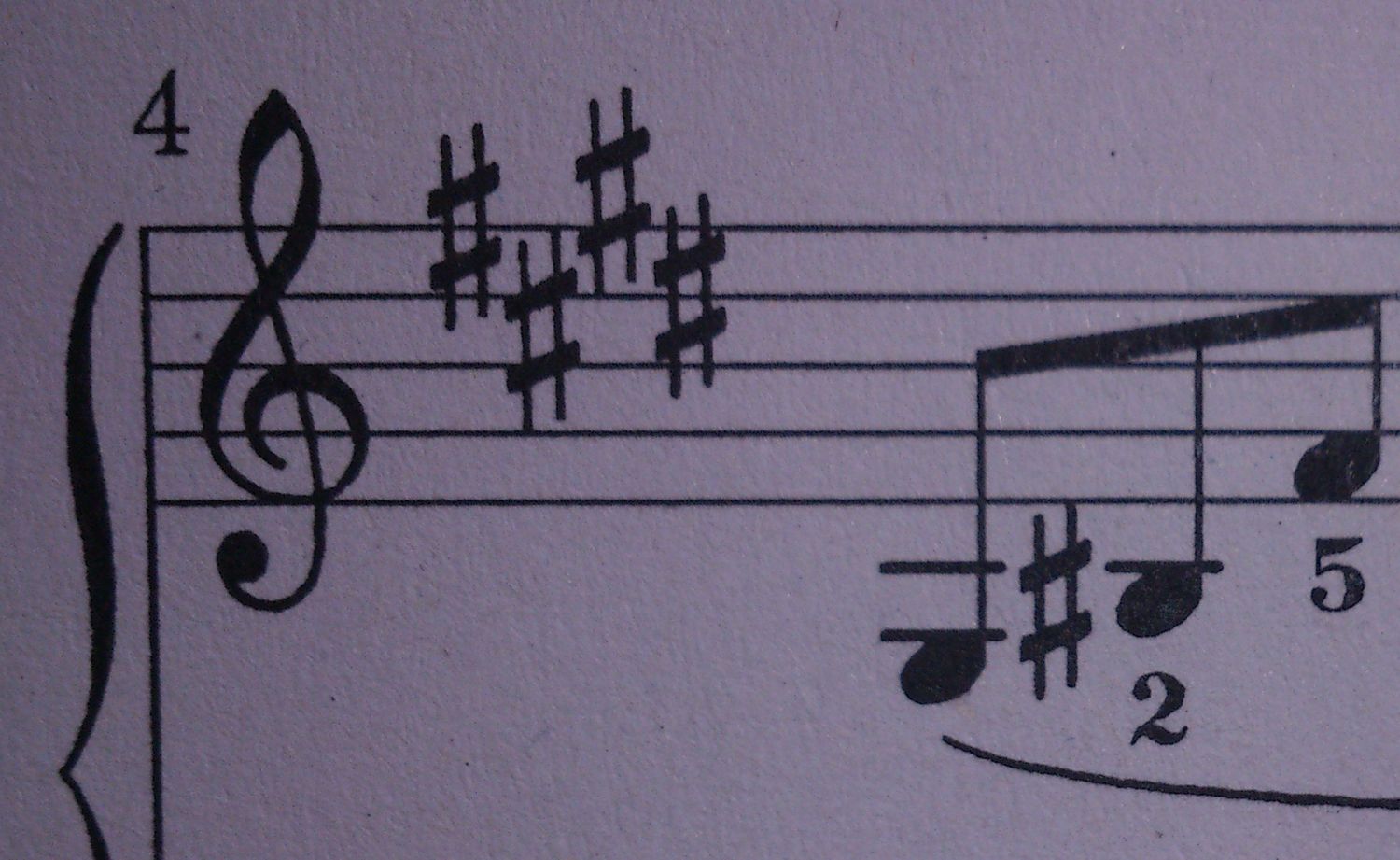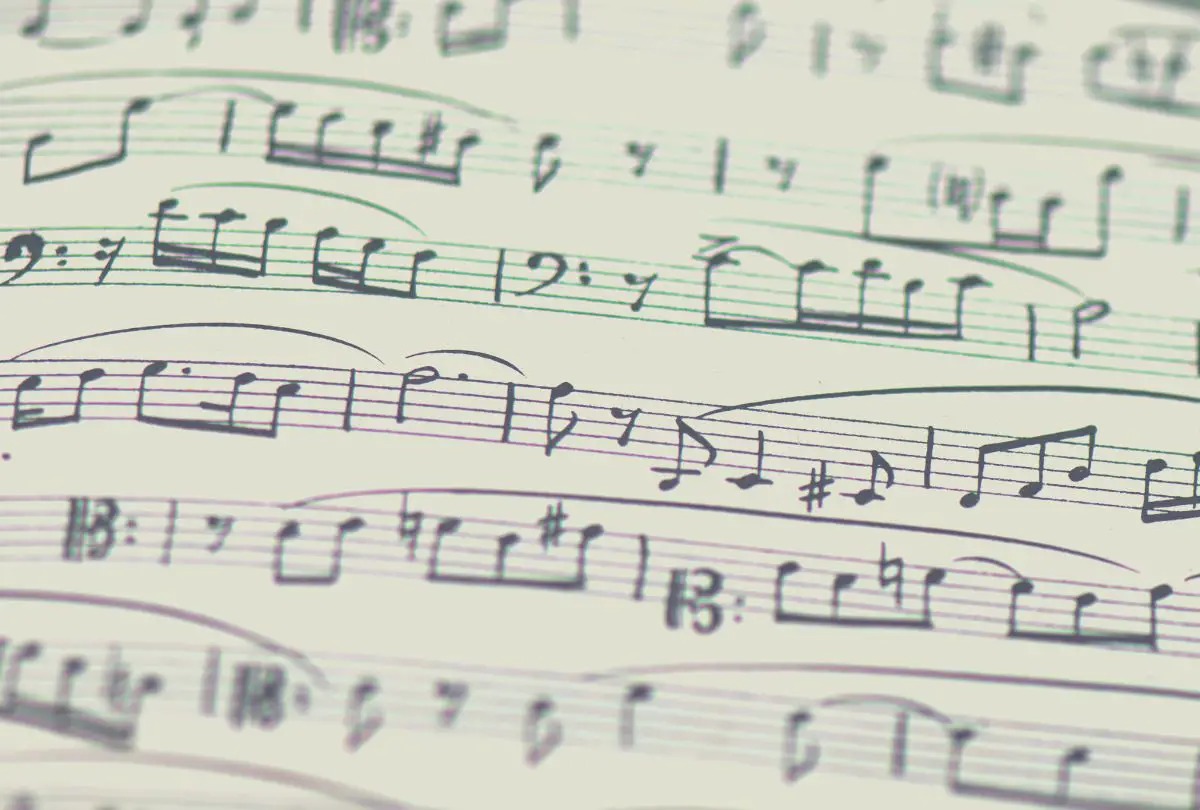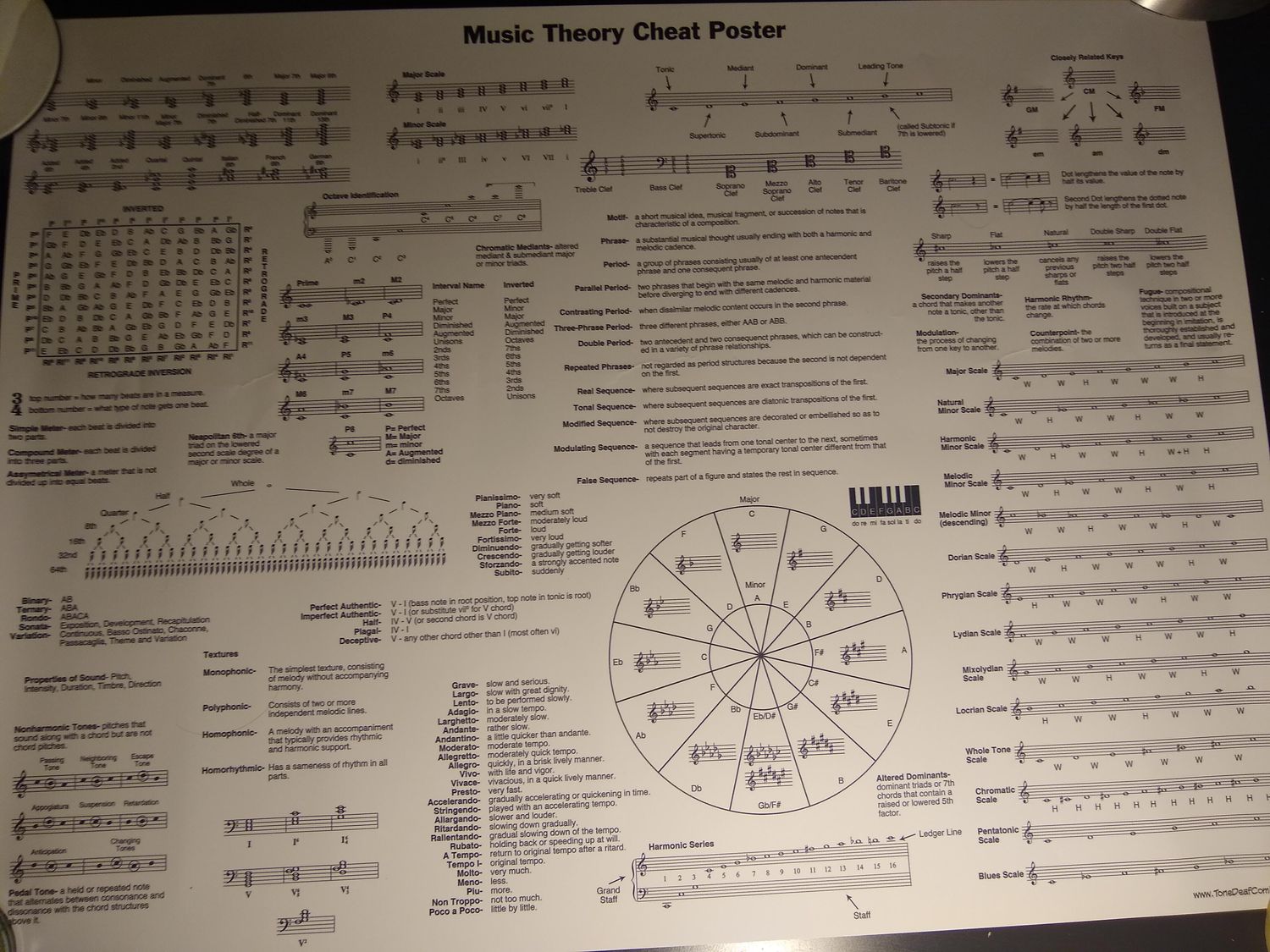Home>Production & Technology>Music Theory>What Does Music Theory Help To Learn


Music Theory
What Does Music Theory Help To Learn
Published: January 30, 2024
Discover the benefits of learning music theory and how it can enhance your musical knowledge. Explore the fundamentals and complexity of music with music theory.
(Many of the links in this article redirect to a specific reviewed product. Your purchase of these products through affiliate links helps to generate commission for AudioLover.com, at no extra cost. Learn more)
Table of Contents
- Introduction
- Basics of Music Theory
- Understanding Musical Notation
- Building Blocks of Music: Scales and Chords
- Key Signatures and Transposition
- Rhythm and Time Signatures
- Melody and Harmony
- Intervals and Ear Training
- Analyzing and Composing Music
- Applying Music Theory to Different Instruments or Genres
- Conclusion
Introduction
Music theory is the backbone of the world of music. It is a system that helps us understand the structure, elements, and principles that govern music. It provides a way to analyze, interpret, and create music. Whether you are a musician, composer, songwriter, or music enthusiast, having a strong foundation in music theory is invaluable.
At its core, music theory helps us make sense of the sounds we hear and how they relate to each other. It gives us a vocabulary to describe and communicate musical ideas. By studying music theory, you can develop a deeper understanding of why certain combinations of notes, chords, and rhythms create specific emotions and convey meaning.
While some may view music theory as a dry and academic subject, it is far from it. Music theory is a powerful tool that allows musicians to express themselves more effectively and communicate their musical ideas with clarity. It empowers musicians to navigate the intricacies of musical composition, improvisation, and performance.
Moreover, music theory is not limited to one specific genre or instrument. It is a universal language that spans across different cultures, styles, and time periods. From classical to jazz, pop to rock, music theory is the common thread that weaves the diverse fabric of music together.
Whether you are just starting your musical journey or are a seasoned professional, understanding the fundamentals of music theory is crucial. In this article, we will explore various aspects of music theory and how they can benefit your musical education and growth.
Basics of Music Theory
Before diving into the intricacies of music theory, it’s essential to establish a solid foundation of the basics. These fundamental concepts lay the groundwork for understanding more complex musical ideas.
One of the first concepts to grasp is the musical staff. The staff consists of five horizontal lines and four spaces, upon which musical notes are written. Each line and space represents a different pitch, allowing us to visualize and read music notation.
The next step is understanding musical notes. Notes represent the pitch and duration of a sound. The pitch is indicated by the position of the note on the staff, and the duration is represented by the shape of the note. For example, a filled-in circle represents a whole note, while a solid oval represents a half note.
In addition to notes, rests are also an essential part of music notation. Rests indicate moments of silence or pauses in the music, giving it a rhythmic structure and allowing performers to interpret the timing of the piece.
Another crucial aspect of music theory is understanding time signatures. Time signatures dictate the overall rhythmic structure of a piece of music. The most common time signature is 4/4, also known as common time, which means there are four beats in each measure, with a quarter note receiving one beat.
When it comes to rhythm, understanding note values and their durations is essential. Note values range from whole notes (four beats) to sixteenth notes (1/16th of a beat), allowing for a wide variety of rhythmic patterns and combinations.
Lastly, learning about the musical alphabet is fundamental. The musical alphabet consists of the notes A, B, C, D, E, F, and G, which are repeated at different octaves. This alphabet forms the basis for naming notes on the staff and understanding musical intervals.
By grasping these basic concepts, you lay the groundwork for further exploration of music theory. It allows you to read and interpret sheet music, understand the rhythmic structure of a piece, and communicate musical ideas more effectively.
Understanding Musical Notation
Music notation is the written language of music. It enables musicians to communicate and share their compositions and performances with others. Understanding musical notation is crucial for musicians of all levels, as it allows for accurate interpretation and reproduction of musical ideas.
The foundation of musical notation is the staff. As mentioned earlier, the staff consists of five lines and four spaces, upon which musical notes are placed. By assigning specific pitches to each line and space, the staff provides a visual representation of the music.
Notes are the symbols used to represent pitches. Each note is placed on a specific line or space of the staff, indicating its pitch. For example, a note placed on the bottom line of the staff represents the pitch E, while a note on the top line represents the pitch F.
In addition to notes, other symbols and markings are used in musical notation. For example, a clef sign, such as the treble clef or bass clef, indicates the general range of pitches for a particular instrument or voice. Sharps (#) and flats (♭) are used to modify the pitch of a note, raising or lowering it by a half step.
Another important aspect of musical notation is dynamics. Dynamics indicate the volume or intensity of the music. Symbols such as piano (soft) and forte (loud) are used to specify how a particular section or passage should be played.
Articulation marks and symbols are used to convey specific techniques or styles of playing. For example, a slur indicates that notes should be played smoothly and connected, while a staccato dot indicates short and detached notes.
Understanding rhythmic notation is also essential. In addition to note shapes, symbols called time signatures are used to indicate the rhythmic structure of a piece. The top number of the time signature indicates the number of beats in each measure, and the bottom number indicates which note value receives one beat.
Rests are also an integral part of musical notation. They indicate moments of silence or pauses in the music. Rests are written using symbols similar to notes but with slight variations in shape and positioning.
By acquiring a good grasp of musical notation, you open up a world of possibilities. It allows you to read and interpret sheet music accurately, learn new pieces, and communicate musical ideas effectively with other musicians.
Building Blocks of Music: Scales and Chords
Scales and chords are the building blocks of music. They form the foundation upon which melodies and harmonies are constructed. Understanding scales and chords is essential for musicians, as they provide the framework for musical composition, improvisation, and understanding the relationships between different musical elements.
A scale is a series of notes arranged in ascending or descending order, creating a specific pattern of intervals. The most common scale in Western music is the major scale, which consists of seven notes and follows a specific pattern of whole steps and half steps. Other scales, such as the minor scale, pentatonic scale, and blues scale, provide different tonal colors and moods.
Chords, on the other hand, are a combination of three or more notes played simultaneously. Chords are often built upon the notes of a scale and are used to create harmony and support melodies. The most basic type of chord is the triad, which consists of three notes: the root, the third, and the fifth. More complex chords, such as seventh chords and extended chords, add additional notes to create richer and more expressive harmonies.
One of the essential skills in music theory is understanding how scales and chords relate to each other. The notes of a chord are derived from the corresponding scale. For example, a C major chord consists of the notes C, E, and G, which are all part of the C major scale. By understanding these relationships, musicians can easily identify and construct chords that harmonize with a given melody or harmony.
Scales and chords play a vital role in improvisation as well. When improvising solos or melodies, musicians often use scales as a guide, selecting notes from the scale that correspond to the chord progression. This ensures that the improvisation remains harmonically consistent while allowing for personal expression and creativity.
Additionally, knowing different scales and chords opens up a wide range of musical possibilities. By exploring different scales and experimenting with chord progressions, musicians can create unique and captivating compositions. They can also analyze and understand the harmonic structures of existing music more effectively.
Understanding scales and chords not only enhances your understanding of music theory but also empowers you as a musician. It provides you with the tools to create and interpret music in a more informed and expressive way, whether you are composing, performing, or improvising.
Key Signatures and Transposition
Key signatures and transposition are crucial concepts in music theory that allow musicians to play music in different keys and understand the relationships between musical elements. Key signatures help determine the tonal center of a piece, while transposition allows for playing music in different keys while maintaining the same musical relationships.
A key signature is a collection of sharps or flats that appear at the beginning of a musical staff. It indicates the key in which a musical piece is written. The key signature alters certain notes throughout the piece, making them sharp or flat by default. For example, if a piece has a key signature with two sharps, all the notes F and C are automatically played as F# and C# throughout the piece.
Understanding key signatures is essential because it helps musicians identify notes and chords that are likely to be used in a particular key. It also aids in sight-reading and transposing music, as musicians can quickly recognize patterns and relationships within a specific key.
Transposition, on the other hand, is the process of performing a piece of music in a different key. It involves shifting all the pitches of the piece up or down by a consistent interval. Transposition is a valuable skill for musicians, as it allows for adapting music to different instruments, accommodating vocal ranges, or creating new arrangements.
Transposing music helps musicians play comfortably within their vocal or instrumental range. For example, a song originally written in the key of C might be too high for a singer, so it can be transposed down to a lower key, such as Bb or G. By doing so, the singer can perform the piece with ease and comfort.
Transposition is also beneficial when playing music together with other musicians. If a guitarist is playing in the key of G, but a saxophonist wants to play along using a different key, transposing the music allows both musicians to play together without conflicting tonalities.
Furthermore, transposing music can offer new creative possibilities. A composer or arranger may choose to transpose a piece to a different key to evoke different emotions or explore different musical textures. Transposing can also provide a fresh and unique take on familiar melodies and harmonies.
Understanding key signatures and transposition opens up a world of musical flexibility and creativity. It allows musicians to play music in different keys, adapt music to different instruments or vocal ranges, and enhance their overall understanding of how different elements of music relate to each other.
Rhythm and Time Signatures
Rhythm is the heartbeat of music. It gives music its groove, energy, and drive. Understanding rhythm and time signatures is essential for musicians, as it allows them to interpret and perform music accurately and maintain a consistent pulse.
Time signatures are numerical symbols placed at the beginning of a piece of music to indicate the organization of beats within each measure. The two most common time signatures are 4/4, also known as common time, and 3/4, also known as waltz time or triple meter.
In a time signature, the top number represents the number of beats per measure, while the bottom number represents the note value that receives one beat. For example, in 4/4 time, there are four beats per measure, and the quarter note receives one beat. This means that each measure will typically contain four quarter notes or an equivalent combination of note values.
Understanding time signatures is crucial because they provide a rhythmic framework for musicians to follow. They help establish the overall feel and flow of a piece of music. Different time signatures create distinct rhythmic patterns and accents, contributing to the style and character of the music.
Rhythm is expressed through a combination of long and short notes and rests. Musical notes are divided into different durations, such as whole notes, half notes, quarter notes, eighth notes, and sixteenth notes. Rests indicate moments of silence or pauses within the music.
When reading and playing music, it’s important to accurately interpret the rhythm and play the notes with the correct durations. This involves subdividing beats and understanding how note and rest values fit within the time signature. Counting aloud, using rhythmic subdivisions, and practicing with a metronome can all help develop a strong sense of rhythm.
Furthermore, different musical genres and styles use different rhythmic patterns and feels. From the steady eighth note pulse in rock music to the syncopated rhythms of jazz, understanding and internalizing diverse rhythmic patterns allows musicians to perform with authenticity and mastery across various genres.
Developing a solid understanding of rhythm and time signatures is essential for musicians. It enables them to interpret and perform music accurately, maintain a consistent pulse, and effectively communicate with other musicians. By mastering rhythm, musicians can infuse their performances with groove, energy, and musicality.
Melody and Harmony
Melody and harmony are two essential components of music that work together to create beauty and emotional impact. Melody refers to the main musical line or tune, while harmony refers to the supporting chords and accompaniment that enrich and complement the melody.
Melody is the aspect of music that is most easily recognized and remembered. It is the sequence of notes played one after another that forms a recognizable and cohesive musical idea. Melodies can be simple or intricate, conveying a wide range of emotions and moods. They are often the part of a song that listeners hum or sing along to.
Harmony, on the other hand, refers to the simultaneous sounding of different notes to create chords. Chords provide a harmonic framework that supports and enhances the melody. They contribute to the overall mood and give depth and richness to the musical composition. Harmonies can be simple or complex, and skilled composers and musicians play with chord progressions to create tension, release, and emotional impact.
Understanding melody and harmony is crucial for musicians as it allows them to create and interpret music effectively. A strong melodic sense enables musicians to develop memorable tunes that resonate with listeners. It also helps them convey emotions and tell stories through their music.
Harmony, on the other hand, provides structure and depth to a musical piece. It allows musicians to create different harmonic textures, explore various chord progressions, and convey specific moods and feelings. Harmony plays a crucial role in the emotional impact of music, moving listeners and evoking specific responses.
When melody and harmony work together harmoniously, they create a cohesive and powerful musical experience. The melody is supported and enhanced by the harmonic progression, giving the music a sense of direction and purpose. Conversely, dissonance and tension in harmony can add complexity and intrigue to the melody, creating musical interest and capturing the listener’s attention.
Whether you are a composer, songwriter, or performer, having a good understanding of both melody and harmony is essential. It allows you to create engaging and meaningful musical compositions and performances. By balancing the interplay between melody and harmony, musicians can craft music that resonates deeply with both themselves and their audience.
Intervals and Ear Training
Intervals and ear training are fundamental aspects of music theory that help develop a musician’s ability to recognize and understand the relationships between notes and pitches. Intervals refer to the distance between two notes, while ear training focuses on developing the ability to identify and reproduce specific pitches and intervals by ear.
An interval is named based on the number of letter names and the number of half steps (or semitones) it spans. For example, the interval between C and E is a major third, as it spans two letter names (C and D) and four half steps.
Understanding intervals is essential for musicians as it enables them to play melodies, harmonies, and chords accurately, regardless of the key or position on their instrument. By recognizing intervals, musicians can quickly identify and reproduce patterns and progressions in their playing or composing.
Ear training is the process of developing a musician’s ability to recognize and reproduce pitches and intervals by ear. It involves listening to and identifying various melodies, chords, and intervals. Through ear training exercises and practice, musicians can sharpen their listening skills and improve their overall musicality.
Ear training is beneficial in many ways. It helps musicians develop a better sense of pitch and intonation, allowing them to accurately replicate melodies and harmonies. Strong ear training skills also enhance a musician’s ability to play by ear, improvise, and transpose music to different keys or instruments.
Additionally, ear training enhances a musician’s overall musical perception and understanding. It helps them recognize and appreciate the nuances of different musical styles, tonalities, and timbres. Ear training also aids in sight-reading and learning music more efficiently, as musicians can hear the musical phrases in their mind before playing them on their instrument.
Practicing intervals and ear training exercises regularly can significantly improve a musician’s musical ear and proficiency. Tools such as interval recognition apps, playing along with recordings, or singing melodies and intervals can all aid in developing ear training skills.
Intervals and ear training are essential skills for musicians of all levels. They provide a solid foundation for playing by ear, recognizing and interpreting music accurately, and improving overall musicianship. By developing a keen ear and understanding of intervals, musicians can elevate their playing and engage with music on a deeper level.
Analyzing and Composing Music
Analyzing and composing music are two interconnected skills that allow musicians to delve deeper into the structure, meaning, and creative process of music. Analyzing music involves breaking down a piece into its elements and understanding how they work together, while composing music involves creating original musical ideas and compositions.
When analyzing music, musicians examine the various components that make up a piece, such as melody, harmony, rhythm, form, and dynamics. By dissecting and studying these elements, musicians can gain insights into the compositional choices made by the composer and understand the overall structure and emotional impact of the music.
Analyzing music aids musicians in understanding different musical genres and styles, as well as historical periods and cultural contexts. It enables them to recognize common patterns, chord progressions, or melodic motifs that are characteristic of a particular style. This knowledge can then be applied in their own compositions or performances.
Composing music involves the creative process of crafting original melodies, harmonies, and arrangements. It allows musicians to express their unique musical ideas and emotions. By understanding the structures and techniques used in different musical compositions, musicians can apply these concepts to their own creations, whether it’s writing a song, composing a symphony, or arranging a jazz piece.
Analyzing and composing music go hand in hand. Through analysis, musicians gain a deeper understanding of how various musical elements work together, providing them with insights and inspiration for their own compositions. Similarly, through composition, musicians gain a practical understanding of the concepts and techniques they have learned through analysis.
Both skills encourage musicians to think critically, experiment, and push the boundaries of traditional musical conventions. Analyzing and composing music foster creativity, allowing musicians to explore new sounds, harmonies, and structures. They also enable musicians to develop their own musical voice and style.
Moreover, by analyzing and composing music, musicians gain a greater appreciation for the artistry and craftsmanship behind the music they play and listen to. They develop a more profound connection with the music, engaging with it on a deeper level.
Whether studying the works of great composers or writing their own original pieces, analyzing and composing music is a valuable practice for musicians. It provides a pathway for growth, self-expression, and a deeper understanding of the intricacies of music.
Applying Music Theory to Different Instruments or Genres
Music theory is a universal language that applies to all instruments and genres of music. While the specific techniques and stylistic elements may vary between instruments or genres, the underlying principles of music theory remain the same. Understanding how to apply music theory to different instruments or genres can enhance musicians’ playing, improvising, and composing abilities.
When it comes to instruments, music theory provides a solid foundation for understanding scales, chords, and musical structures that apply to all instruments. Whether you play the piano, guitar, violin, or any other instrument, the knowledge of scales and chords allows for improvisation, creating accompaniments, and performing melodies in different keys.
Applying music theory to different instruments involves understanding how the theory manifests on that specific instrument. For example, a guitarist might explore different chord voicings and techniques unique to their instrument. A saxophonist might experiment with scale patterns and improvisation techniques specifically tailored for their instrument. By understanding the instrument-specific applications of music theory, musicians can unlock new possibilities and techniques for their particular instrument.
When it comes to different genres of music, music theory helps musicians understand the underlying principles that define each style. Whether it’s classical, jazz, rock, blues, or hip-hop, music theory provides a framework for understanding the defining characteristics, chord progressions, melodies, and rhythmic patterns of each genre.
Applying music theory to different genres allows musicians to play authentically within the style. For example, in jazz, understanding chord substitutions and extended harmony can enhance improvisation. In classical music, understanding different forms and structures can aid in interpreting and performing a piece accurately. In rock or pop music, understanding power chords and pentatonic scales can add intensity and excitement to a performance or composition.
Furthermore, mixing genres and incorporating elements of different styles can lead to unique and innovative musical creations. Applying music theory to various genres allows musicians to experiment and create hybrid sounds, blending different harmonic progressions, rhythms, and melodies to create their own signature sound.
Ultimately, applying music theory to different instruments or genres empowers musicians to express themselves, connect with other musicians, and engage with a broader range of musical styles. It provides the tools to fluently communicate and navigate different musical contexts, opening up a wealth of creative opportunities.
Conclusion
Music theory is a powerful tool that enhances our understanding and appreciation of music. It provides the framework for analyzing, interpreting, and creating music across different instruments, genres, and styles. Whether you are a musician, composer, songwriter, or music enthusiast, a solid foundation in music theory is invaluable.
From the basics of musical notation and understanding scales and chords to analyzing and composing music, music theory equips us with the knowledge and skills to engage with music on a deeper level. It allows us to recognize the patterns, structures, and intricacies that shape musical compositions.
Moreover, music theory goes beyond theoretical knowledge. It directly impacts our musical abilities and performances. By understanding music theory, we can read and interpret sheet music accurately, improvise with confidence, and communicate our musical ideas effectively with other musicians.
Music theory also enriches our listening experience. It enables us to appreciate the nuances, harmonies, and timbres of different musical pieces. We can recognize musical patterns, appreciate complex chord progressions, and deepen our connection to the music we love.
Whether we are analyzing and composing music, applying music theory to different instruments or genres, or developing our ear through intervals and ear training, music theory provides a solid framework for musical growth and creativity.
By delving into the world of music theory, we open up a world of possibilities. We can unlock new techniques, understand the intricacies of different musical styles, and express ourselves with clarity and precision.
So, whether you’re just starting your musical journey or looking to expand your musical horizons, embracing music theory will undoubtedly enhance your musicality and open doors to new musical experiences. Consider music theory as a guide that empowers you to explore, create, and appreciate music in a deeper and more meaningful way.











